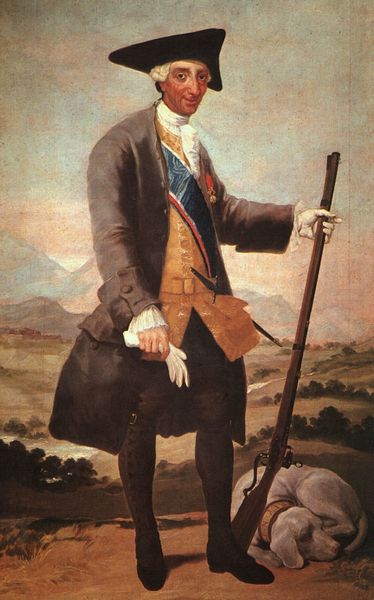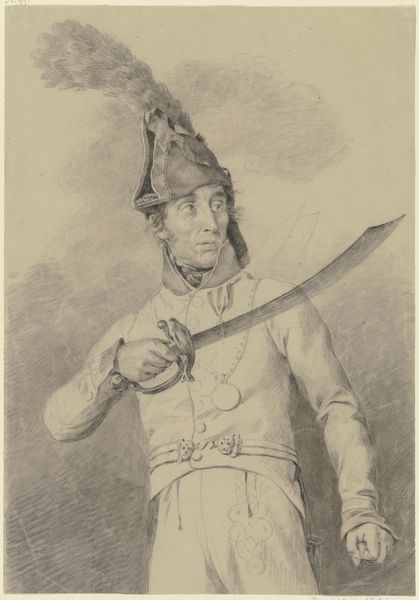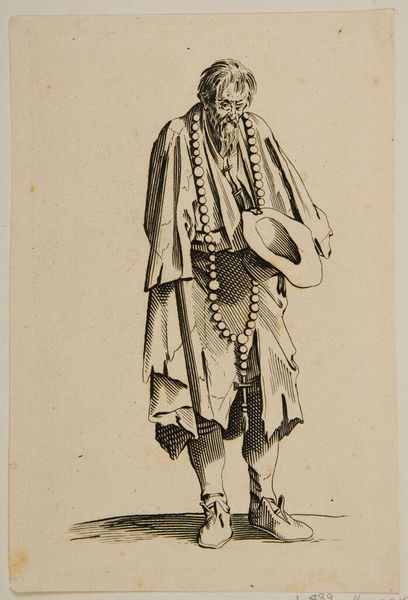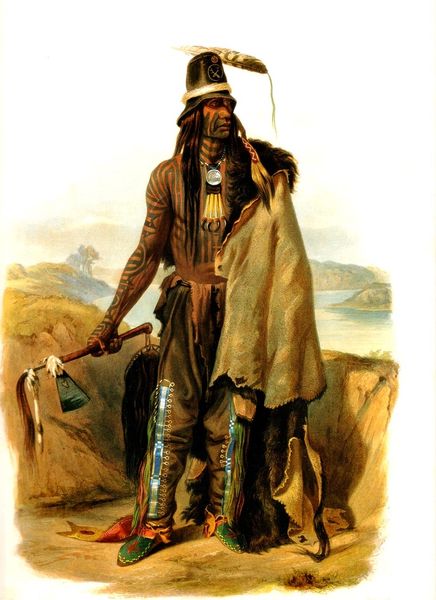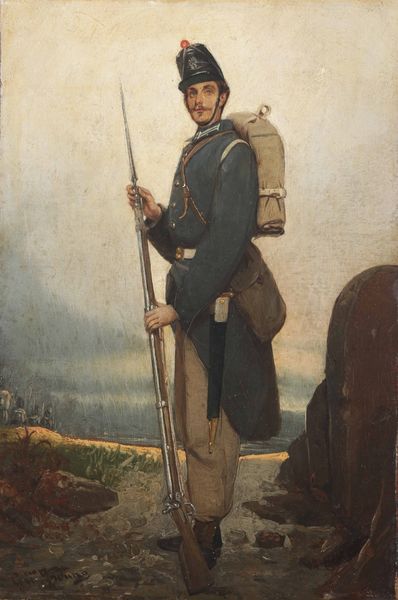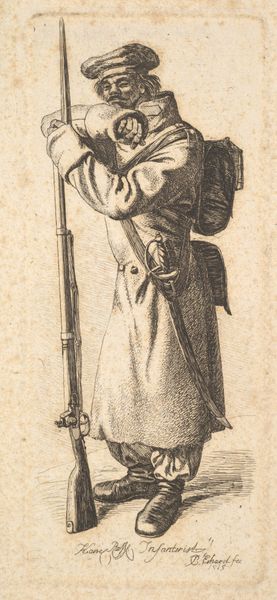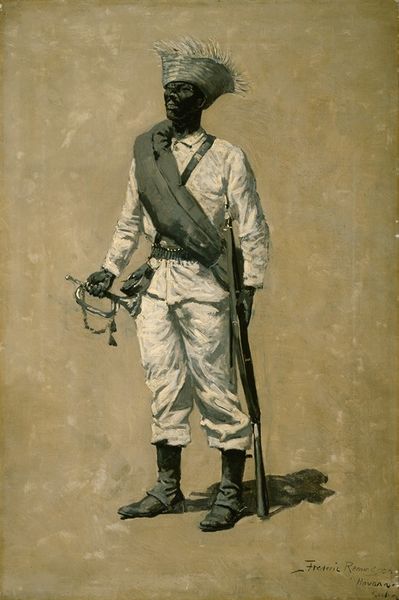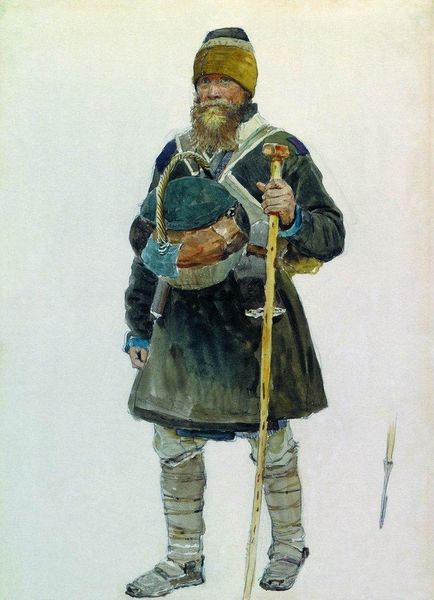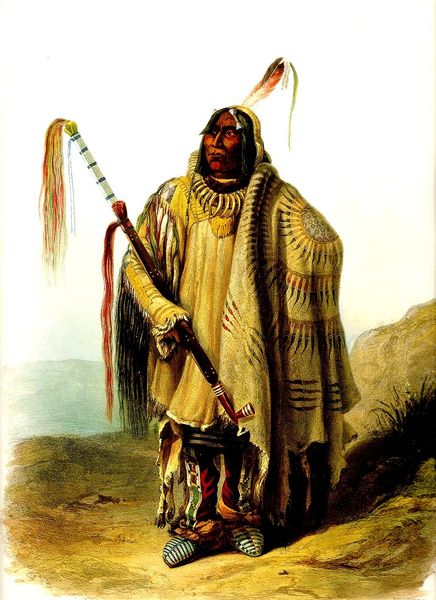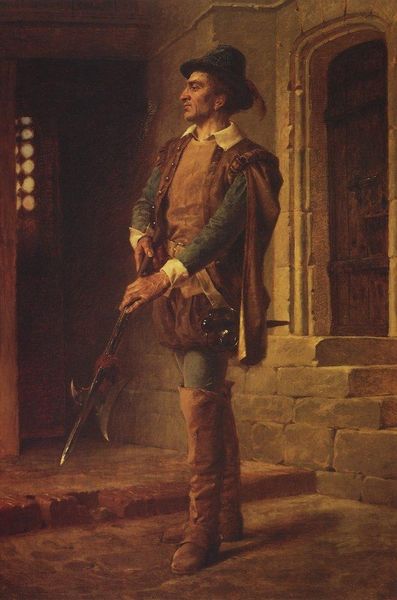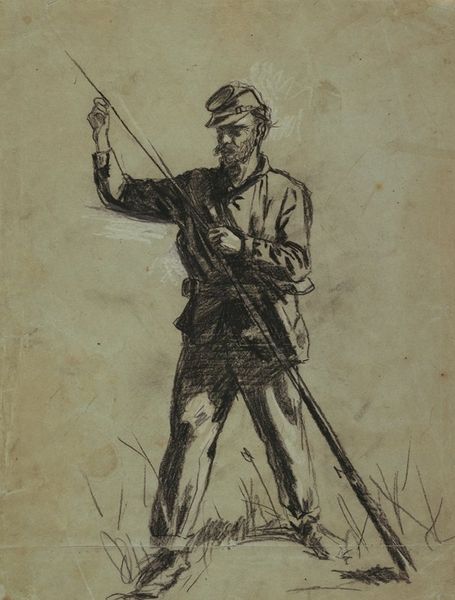
painting, oil-paint
#
portrait
#
painting
#
oil-paint
#
landscape
#
history-painting
#
realism
Copyright: Public domain US
Editor: This is Norman Rockwell's "Scouting with Daniel Boone," an oil painting from 1914. I'm immediately struck by how Rockwell romanticizes the figure of Boone; it feels like a constructed image rather than a historical record. What's your take? Curator: That's a great initial observation. I see it similarly. It’s important to consider Rockwell's career trajectory, initially as a commercial illustrator, to understand how socio-political forces shaped this kind of idealized imagery. Look at how Boone is dressed. Is it accurate, or is it performing an idea of frontier heroism for a specific audience? Editor: That's interesting. So, is the painting less about accurately representing Boone and more about conveying a particular vision of American history? Curator: Exactly! And who is that vision for? Consider that 1914 was a time of significant national anxieties regarding immigration and industrialization. These images served to solidify a particular narrative of American identity. What impact do you think an image like this had? Editor: It probably reinforced a sense of American exceptionalism and a selectively remembered past, ignoring the complexities and violence of westward expansion. Also, Boone looks nothing like indigenous peoples. It reinforces their absence from this narrative. Curator: Precisely! The romanticization actively obscures the realities of displacement and conflict. These popular images directly influenced and reflected social attitudes of the time. It served a very real purpose, right? Editor: I see now how a seemingly straightforward painting is loaded with historical and social implications. Curator: And that's where art history can reveal the potent role images play in shaping our understanding of the past. Editor: Definitely food for thought. This makes me consider all visual representation with an understanding of how much that representation affects a viewer.
Comments
No comments
Be the first to comment and join the conversation on the ultimate creative platform.
